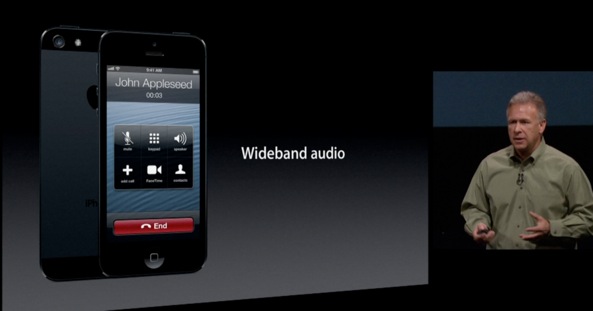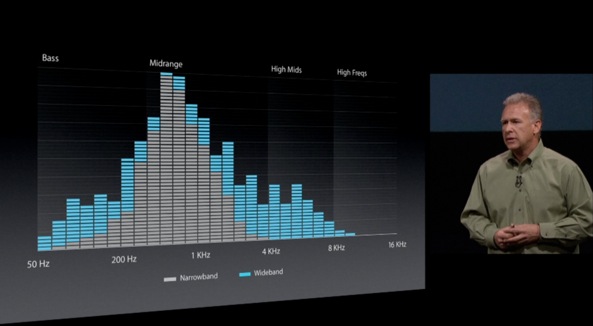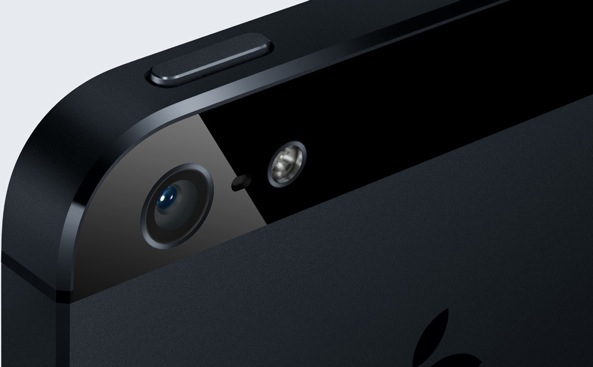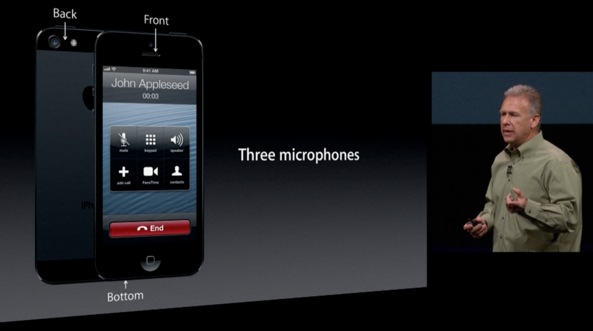Of all the three major carriers in the United States, none is able to support the iPhone 5 high-definition voice technology at launch. Specifically, carriers AT&T and Verizon don’t yet support wideband audio and Sprint’s HD Voice technology is only compatible with CDMA x1 technology whereas the iPhone 5 taps WCDMA networks for the feature. There is, of course, hope that major U.S. telcos will catch up and update their backend for the iPhone 5 wideband audio…
According to PhoneScoop, Sprint won’t support HD audio:
Sprint spokesperson Michelle Leff Mermelstein confirmed to Phone Scoop that the iPhone 5 will not support Sprint’s version of HD Voice. Most carriers offering HD Voice around the world are doing so on WCDMA networks, whereas Sprint’s HD Voice service operates over CDMA 1x Advanced technology.
Apple’s marketing honcho Phil Schiller noted during the iPhone 5 keynote:
This [wideband audio] is a new technology, we’re just starting it and we have carrier partners around the world working with us on it. We’ll have 20 at launch supporting this.
Why is wideband audio important?
An audio technology used in telephony, wideband audio extends the frequency range of audio signals to enable more natural sounding voice. Most networks limit voice calls to the range of 300Hz to 3.4kHz.
Compare that to the human voice range of 80Hz to 14kHz and you quickly realize why your voice sounds flat during a phone call. Wideband audio uses additional bandwidth to transmit voice in the audio frequency range of 50Hz- 7kHz or higher.
In addition to software support for wideband audio, the iPhone 5 also enables higher quality voice calls via its three microphones: one at the bottom, one out the front and the third microphone on the back. This helps in many scenarios, from FaceTime video conferencing to recording a video with the back iSight camera to having a phone call.
Apple is also using these microphones for noise cancellation (which is important for voice recognition and Siri). Noise cancellation presumably taps the speedy A6 chip as Apple apparently dropped Audience for noise cancellation.
Another thing the iPhone 5 does: beamforming, a technique realized via the front and back mics that work together to help the phone focus on sound from the desired location for clearer audio.
The little hole you see between the iSight camera and LEF flash is one of the three mics that the iPhone 5 has.
On the speaker front, the design is now a fifth smaller and Apple is using a five-magnet transducer instead of two, providing better frequency response for audio. Finally, the handset’s earpiece now feature noise cancellation to remove some of the background noise both on your own voice going out and on what you hear through the earpiece.
Here’s Phil Schiller laying out the iPhone 5 wideband audio support.
Some carriers outside the U.S. have implemented, or are deploying, support for wideband audio.
For example, Deutsche Telekom enabled HD Voice for German cell phone users in November 2011. Australia’s Telstra activated the “largest HD Voice network in the world” in June 2011, Austria’s A1 introduced HD Voice in February 2011 and Switzerland’s Swisscom flipped the switch on HD Audio in February of this year.
What do you think about the advances Apple’s engineers made with the iPhone 5?



